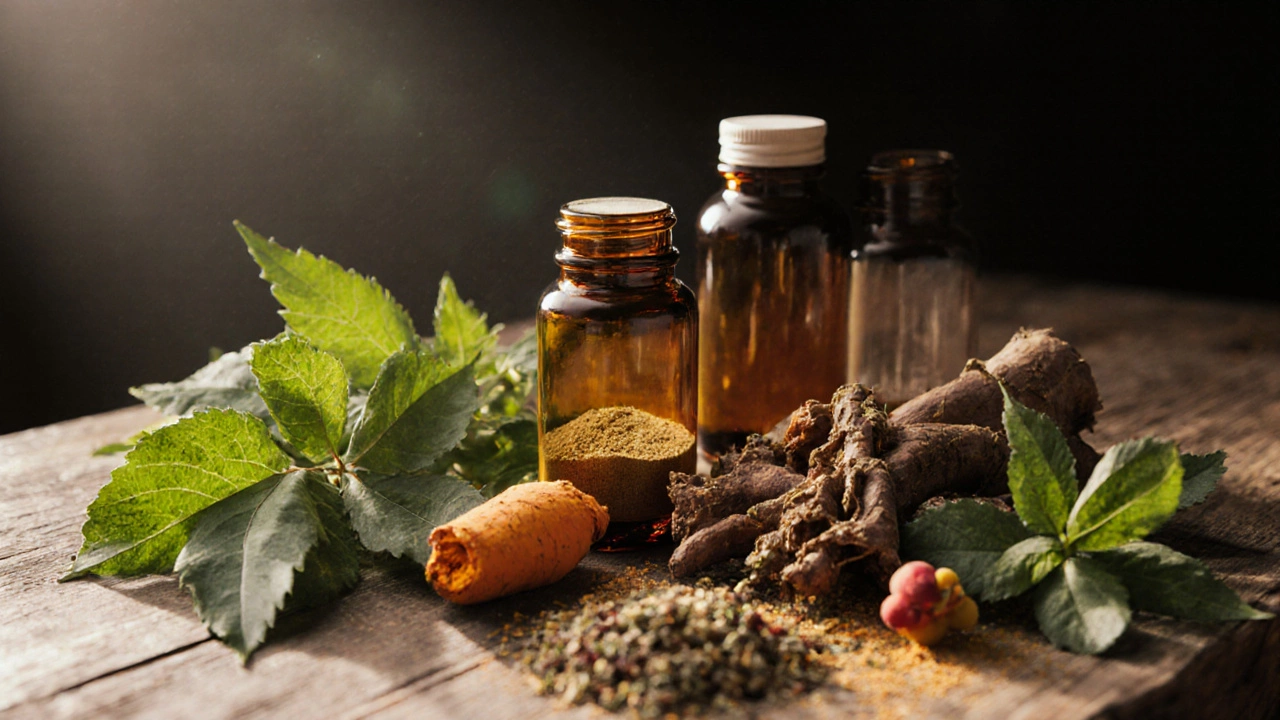Herbal Supplement Safety Explained
When it comes to herbal supplement safety, making sure plant‑based products don’t harm your health. Also known as herb safety, it involves checking ingredients, dosage, and possible interactions before you swallow a capsule or brew a tea.
One of the most talked‑about herbs is Aloe vera, a succulent used for skin and digestive support. While many tout its soothing powers, miracle plant claims often skip the safety steps: testing for purity, watching for laxative effects, and avoiding high doses that can cause electrolyte imbalance. Knowing these details is a core part of herbal supplement safety.
Key Areas You Must Check
First, look at the source. Ayurvedic herbs, traditional Indian plants like ashwagandha, neem, and brahmi are usually grown without synthetic pesticides, but the processing lab matters. Certificates of analysis, third‑party testing, and clear labeling tell you whether the product meets quality standards. Badly processed herbs can carry heavy metals or microbial contamination, turning a natural remedy into a risk.
Second, consider dosage. Every herb has a therapeutic window – the range between a helpful amount and a harmful one. For example, excessive turmeric can thin blood, while too much ginseng may trigger insomnia. The same logic applies to vitamins; high doses of vitamin A or D can be toxic. Matching the right dose to your age, weight, and health status is a vital safety step.
Third, think about interactions. Herbs rarely act alone in the body. Supplement interactions, the way different compounds affect each other’s absorption or metabolism can amplify side effects or reduce effectiveness. Taking St. John’s wort with antidepressants, for instance, may cause serotonin syndrome. Mixing herbal teas with prescription meds without checking can lead to unexpected drops in blood pressure or blood sugar.
Fourth, monitor your body’s response. Safety isn’t a one‑time checklist; it’s ongoing. Keep a simple journal of any new herb you start, noting dose, timing, and any unusual symptoms. If you notice headaches, digestive upset, or skin rashes, pause the supplement and consult a health professional. This feedback loop helps you fine‑tune what works for you and what doesn’t.
Fifth, pay attention to special groups. Pregnant or breastfeeding women, children, and people with chronic conditions need extra caution. Some herbs like licorice can affect hormone levels and aren’t recommended during pregnancy. Likewise, people with kidney disease should avoid high‑potassium herbs such as dandelion. Tailoring herb choices to individual health profiles keeps the benefits while minimizing danger.
Lastly, stay updated. Research on herbal safety evolves quickly. New studies may reveal previously unknown contaminants or interaction risks. Subscribing to reputable health blogs, reading peer‑reviewed articles, or following updates from regulatory agencies ensures you’re not relying on outdated advice.
By following these steps—checking source, dosing correctly, watching for interactions, tracking effects, considering personal health, and staying informed—you create a solid foundation for safe herbal supplement use. This approach not only protects you but also maximizes the therapeutic potential of the plants you trust.
Below you’ll find articles that dig deeper into specific herbs, real‑world safety tips, and how to combine supplements responsibly. Dive in to get the detailed guidance you need for confident, safe herbal supplementation.
Herbal Health Supplements Explained: Benefits, Risks & Top Picks
Learn what herbal health supplements are, their benefits, safety tips, and top picks for 2025. A clear guide to choosing quality plant‑based boosters.
